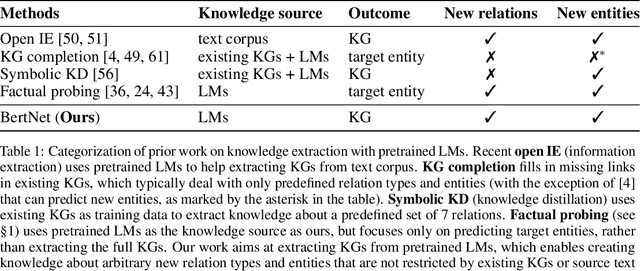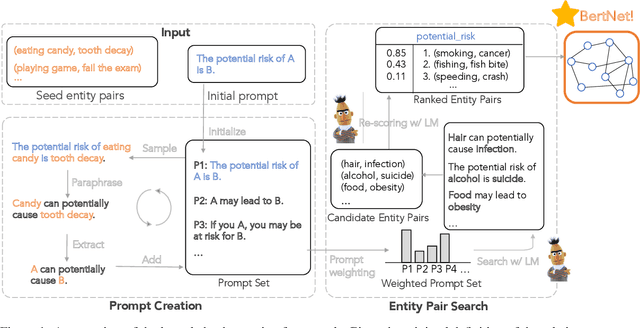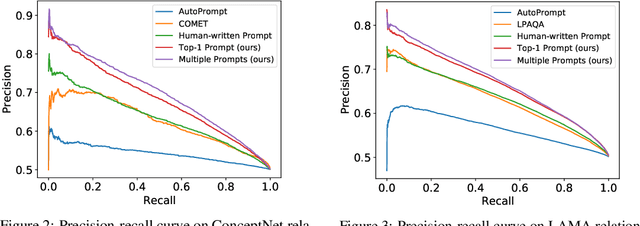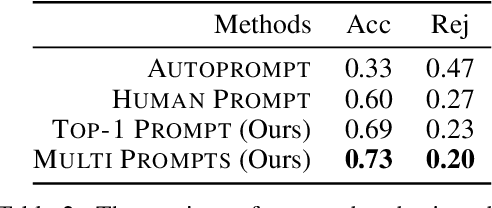Kaiwen Tang
Collaborative Editable Model
Jun 17, 2025Abstract:Vertical-domain large language models (LLMs) play a crucial role in specialized scenarios such as finance, healthcare, and law; however, their training often relies on large-scale annotated data and substantial computational resources, impeding rapid development and continuous iteration. To address these challenges, we introduce the Collaborative Editable Model (CoEM), which constructs a candidate knowledge pool from user-contributed domain snippets, leverages interactive user-model dialogues combined with user ratings and attribution analysis to pinpoint high-value knowledge fragments, and injects these fragments via in-context prompts for lightweight domain adaptation. With high-value knowledge, the LLM can generate more accurate and domain-specific content. In a financial information scenario, we collect 15k feedback from about 120 users and validate CoEM with user ratings to assess the quality of generated insights, demonstrating significant improvements in domain-specific generation while avoiding the time and compute overhead of traditional fine-tuning workflows.
Integrating Deep Learning and Synthetic Biology: A Co-Design Approach for Enhancing Gene Expression via N-terminal Coding Sequences
Feb 20, 2024Abstract:N-terminal coding sequence (NCS) influences gene expression by impacting the translation initiation rate. The NCS optimization problem is to find an NCS that maximizes gene expression. The problem is important in genetic engineering. However, current methods for NCS optimization such as rational design and statistics-guided approaches are labor-intensive yield only relatively small improvements. This paper introduces a deep learning/synthetic biology co-designed few-shot training workflow for NCS optimization. Our method utilizes k-nearest encoding followed by word2vec to encode the NCS, then performs feature extraction using attention mechanisms, before constructing a time-series network for predicting gene expression intensity, and finally a direct search algorithm identifies the optimal NCS with limited training data. We took green fluorescent protein (GFP) expressed by Bacillus subtilis as a reporting protein of NCSs, and employed the fluorescence enhancement factor as the metric of NCS optimization. Within just six iterative experiments, our model generated an NCS (MLD62) that increased average GFP expression by 5.41-fold, outperforming the state-of-the-art NCS designs. Extending our findings beyond GFP, we showed that our engineered NCS (MLD62) can effectively boost the production of N-acetylneuraminic acid by enhancing the expression of the crucial rate-limiting GNA1 gene, demonstrating its practical utility. We have open-sourced our NCS expression database and experimental procedures for public use.
HyperSNN: A new efficient and robust deep learning model for resource constrained control applications
Aug 17, 2023



Abstract:In light of the increasing adoption of edge computing in areas such as intelligent furniture, robotics, and smart homes, this paper introduces HyperSNN, an innovative method for control tasks that uses spiking neural networks (SNNs) in combination with hyperdimensional computing. HyperSNN substitutes expensive 32-bit floating point multiplications with 8-bit integer additions, resulting in reduced energy consumption while enhancing robustness and potentially improving accuracy. Our model was tested on AI Gym benchmarks, including Cartpole, Acrobot, MountainCar, and Lunar Lander. HyperSNN achieves control accuracies that are on par with conventional machine learning methods but with only 1.36% to 9.96% of the energy expenditure. Furthermore, our experiments showed increased robustness when using HyperSNN. We believe that HyperSNN is especially suitable for interactive, mobile, and wearable devices, promoting energy-efficient and robust system design. Furthermore, it paves the way for the practical implementation of complex algorithms like model predictive control (MPC) in real-world industrial scenarios.
Efficient Hyperdimensional Computing
Jan 26, 2023Abstract:Hyperdimensional computing (HDC) uses binary vectors of high dimensions to perform classification. Due to its simplicity and massive parallelism, HDC can be highly energy-efficient and well-suited for resource-constrained platforms. However, in trading off orthogonality with efficiency, hypervectors may use tens of thousands of dimensions. In this paper, we will examine the necessity for such high dimensions. In particular, we give a detailed theoretical analysis of the relationship among dimensions of hypervectors, accuracy, and orthogonality. The main conclusion of this study is that a much lower dimension, typically less than 100, can also achieve similar or even higher detecting accuracy compared with other state-of-the-art HDC models. Based on this insight, we propose a suite of novel techniques to build HDC models that use binary hypervectors of dimensions that are orders of magnitude smaller than those found in the state-of-the-art HDC models, yet yield equivalent or even improved accuracy and efficiency. For image classification, we achieved an HDC accuracy of 96.88\% with a dimension of only 32 on the MNIST dataset. We further explore our methods on more complex datasets like CIFAR-10 and show the limits of HDC computing.
BertNet: Harvesting Knowledge Graphs from Pretrained Language Models
Jun 28, 2022



Abstract:Symbolic knowledge graphs (KGs) have been constructed either by expensive human crowdsourcing or with domain-specific complex information extraction pipelines. The emerging large pretrained language models (LMs), such as Bert, have shown to implicitly encode massive knowledge which can be queried with properly designed prompts. However, compared to the explicit KGs, the implict knowledge in the black-box LMs is often difficult to access or edit and lacks explainability. In this work, we aim at harvesting symbolic KGs from the LMs, a new framework for automatic KG construction empowered by the neural LMs' flexibility and scalability. Compared to prior works that often rely on large human annotated data or existing massive KGs, our approach requires only the minimal definition of relations as inputs, and hence is suitable for extracting knowledge of rich new relations not available before.The approach automatically generates diverse prompts, and performs efficient knowledge search within a given LM for consistent and extensive outputs. The harvested knowledge with our approach is substantially more accurate than with previous methods, as shown in both automatic and human evaluation. As a result, we derive from diverse LMs a family of new KGs (e.g., BertNet and RoBERTaNet) that contain a richer set of commonsense relations, including complex ones (e.g., "A is capable of but not good at B"), than the human-annotated KGs (e.g., ConceptNet). Besides, the resulting KGs also serve as a vehicle to interpret the respective source LMs, leading to new insights into the varying knowledge capability of different LMs.
 Add to Chrome
Add to Chrome Add to Firefox
Add to Firefox Add to Edge
Add to Edge